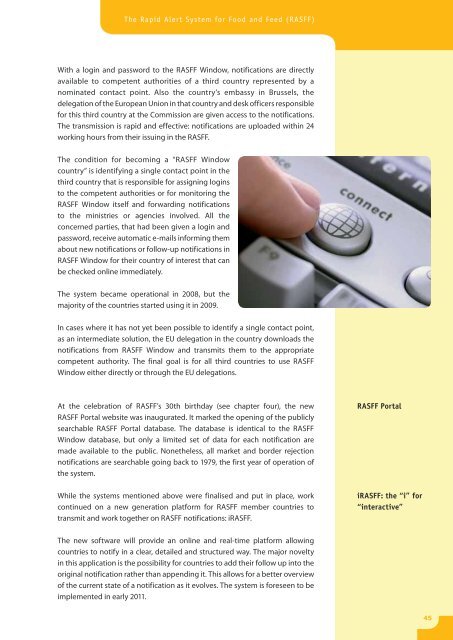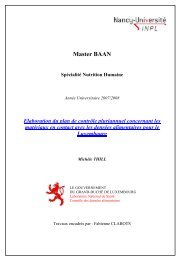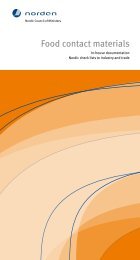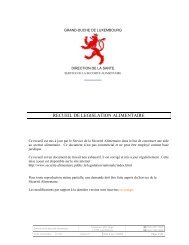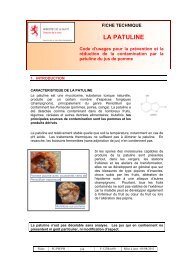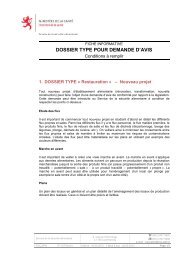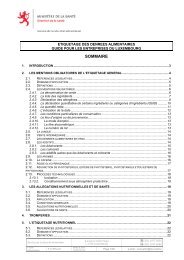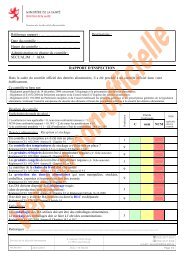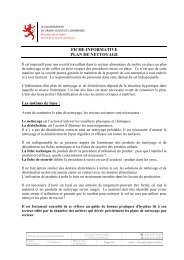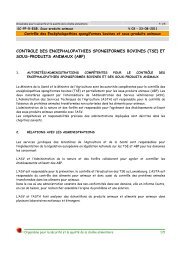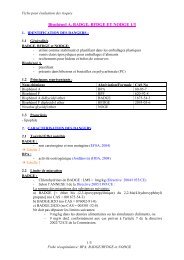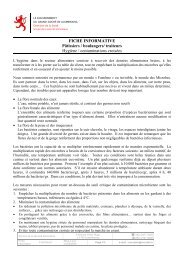(RASFF) Annual Report 2009 - European Commission - Europa
(RASFF) Annual Report 2009 - European Commission - Europa
(RASFF) Annual Report 2009 - European Commission - Europa
You also want an ePaper? Increase the reach of your titles
YUMPU automatically turns print PDFs into web optimized ePapers that Google loves.
The Rapid Alert System for Food and Feed (<strong>RASFF</strong>)<br />
With a login and password to the <strong>RASFF</strong> Window, notifications are directly<br />
available to competent authorities of a third country represented by a<br />
nominated contact point. Also the country’s embassy in Brussels, the<br />
delegation of the <strong>European</strong> Union in that country and desk officers responsible<br />
for this third country at the <strong>Commission</strong> are given access to the notifications.<br />
The transmission is rapid and effective: notifications are uploaded within 24<br />
working hours from their issuing in the <strong>RASFF</strong>.<br />
The condition for becoming a “<strong>RASFF</strong> Window<br />
country” is identifying a single contact point in the<br />
third country that is responsible for assigning logins<br />
to the competent authorities or for monitoring the<br />
<strong>RASFF</strong> Window itself and forwarding notifications<br />
to the ministries or agencies involved. All the<br />
concerned parties, that had been given a login and<br />
password, receive automatic e-mails informing them<br />
about new notifications or follow-up notifications in<br />
<strong>RASFF</strong> Window for their country of interest that can<br />
be checked online immediately.<br />
The system became operational in 2008, but the<br />
majority of the countries started using it in <strong>2009</strong>.<br />
In cases where it has not yet been possible to identify a single contact point,<br />
as an intermediate solution, the EU delegation in the country downloads the<br />
notifications from <strong>RASFF</strong> Window and transmits them to the appropriate<br />
competent authority. The final goal is for all third countries to use <strong>RASFF</strong><br />
Window either directly or through the EU delegations.<br />
At the celebration of <strong>RASFF</strong>’s 30th birthday (see chapter four), the new<br />
<strong>RASFF</strong> Portal website was inaugurated. It marked the opening of the publicly<br />
searchable <strong>RASFF</strong> Portal database. The database is identical to the <strong>RASFF</strong><br />
Window database, but only a limited set of data for each notification are<br />
made available to the public. Nonetheless, all market and border rejection<br />
notifications are searchable going back to 1979, the first year of operation of<br />
the system.<br />
While the systems mentioned above were finalised and put in place, work<br />
continued on a new generation platform for <strong>RASFF</strong> member countries to<br />
transmit and work together on <strong>RASFF</strong> notifications: i<strong>RASFF</strong>.<br />
<strong>RASFF</strong> Portal<br />
i<strong>RASFF</strong>: the “i” for<br />
“interactive”<br />
The new software will provide an online and real-time platform allowing<br />
countries to notify in a clear, detailed and structured way. The major novelty<br />
in this application is the possibility for countries to add their follow up into the<br />
original notification rather than appending it. This allows for a better overview<br />
of the current state of a notification as it evolves. The system is foreseen to be<br />
implemented in early 2011.<br />
45


